21+ Sample Medication Checklists
-
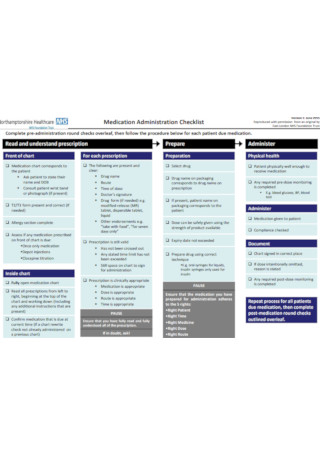
Medication Administration Checklist
download now -
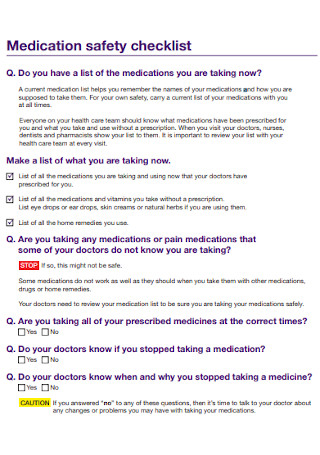
Medication Safety Checklist
download now -
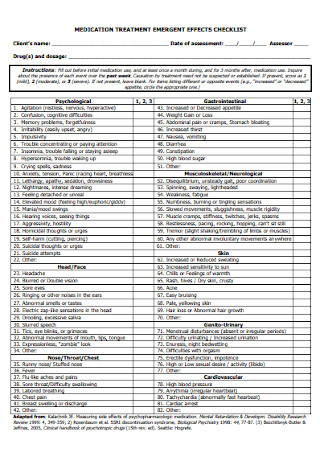
Medication Treatment Checklist Template
download now -
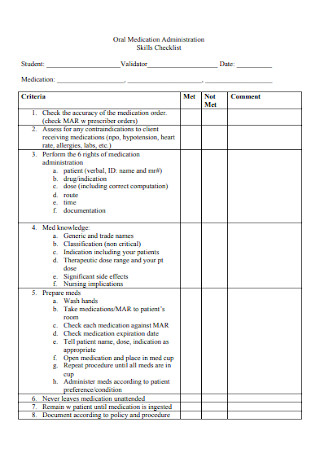
Medication Administration Skills Checklist
download now -
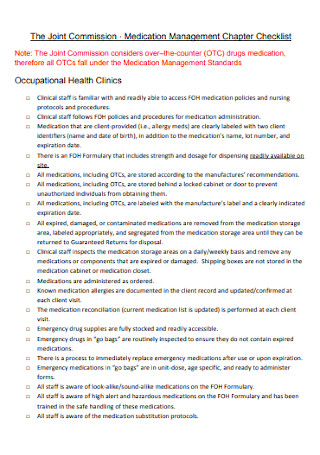
Medication Management Chapter Checklist
download now -
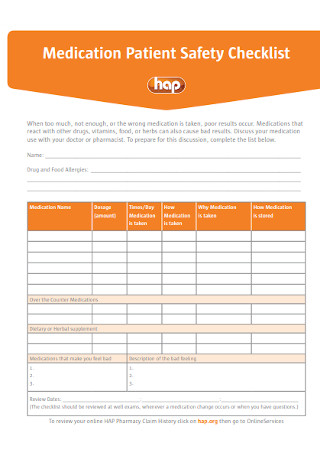
Medication Patient Safety Checklist
download now -
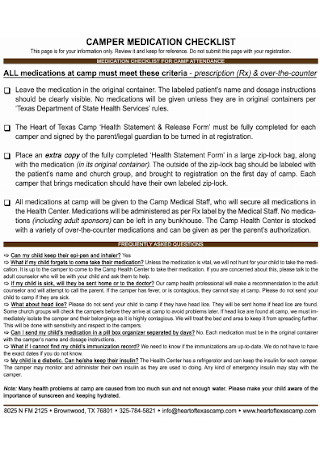
Camper Medication Checklist
download now -
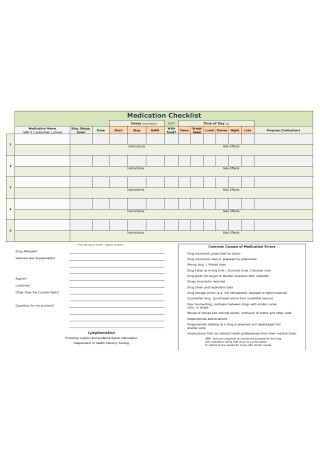
Sample Medication Checklist Template
download now -
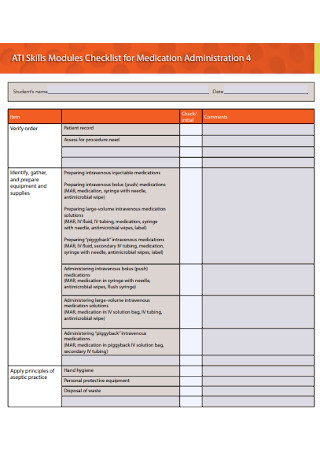
Checklist for Medication Administration
download now -
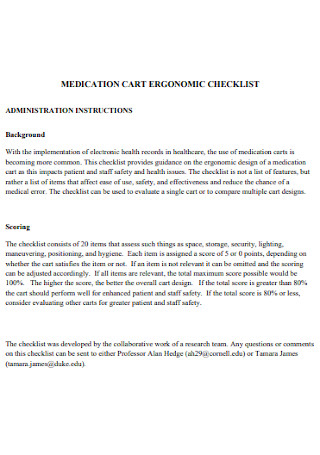
Medicaton Cart Ergonomic Checklist
download now -

Pharmacist Clinical Medication Review Checklist
download now -
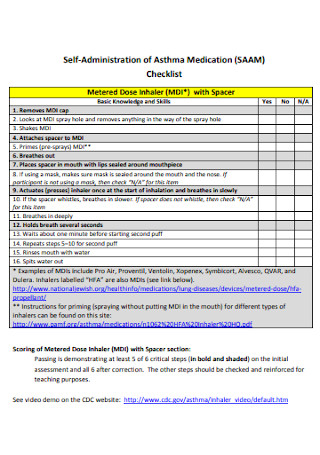
Administration of Asthma Medication Checklist
download now -
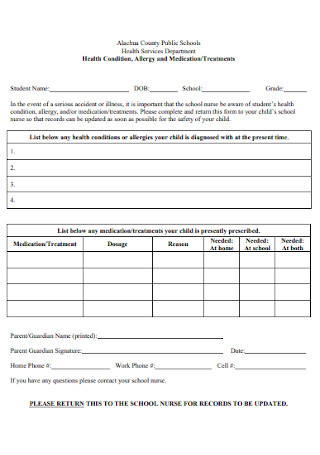
Health Medication Checklist
download now -
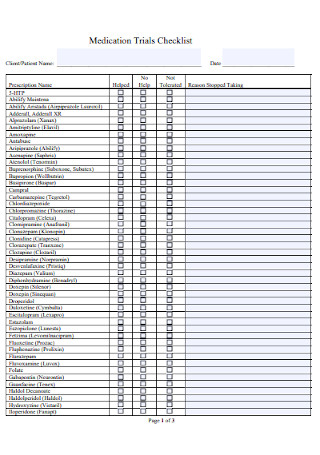
Medication Trials Checklist
download now -
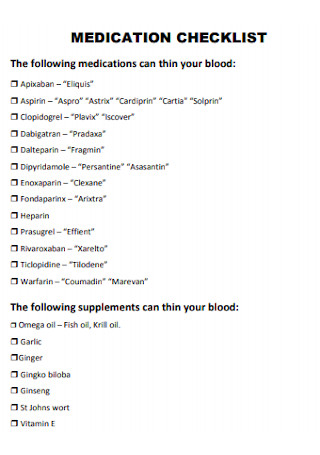
Basic Medication Checklist Template
download now -
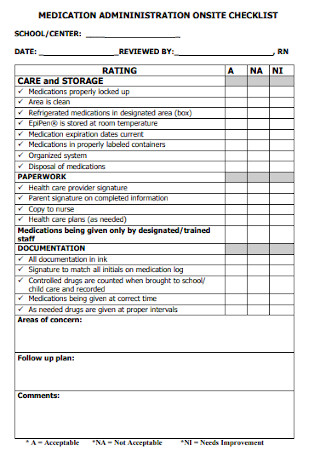
Medication Administration Onsite Checklist
download now -
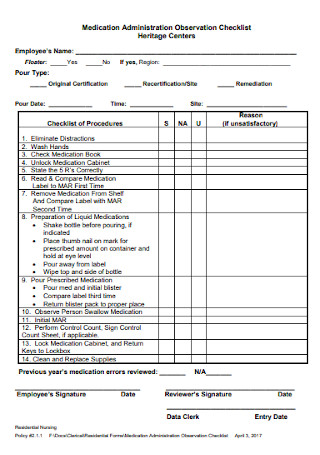
Medication Administration Observation Checklist
download now -
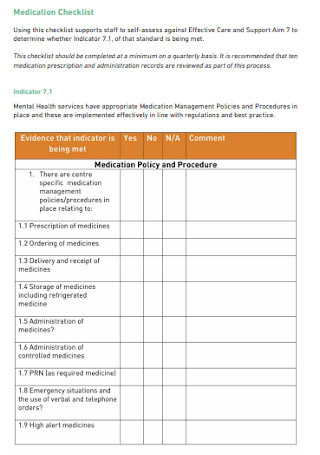
Mental Health Medication Checklist
download now -
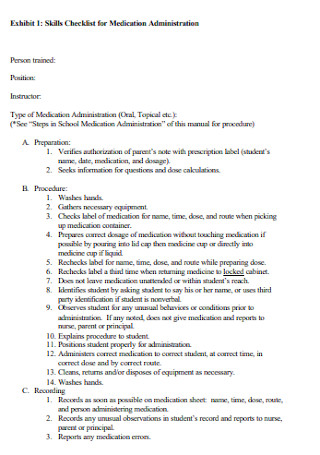
Skill Checklidt for Medication Administration
download now -
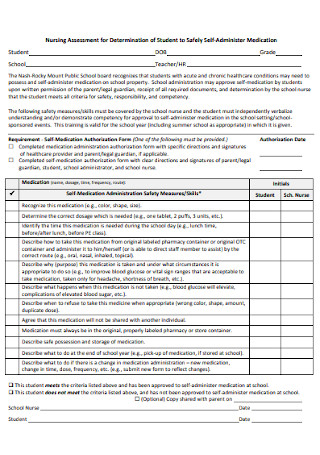
Student Safety Skills Medication Check List
download now -
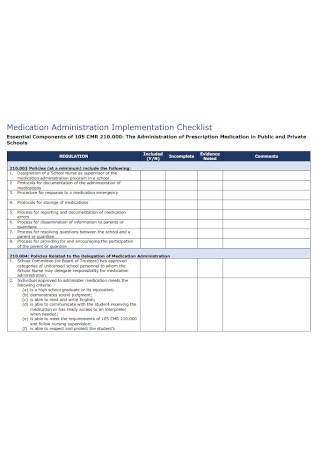
Medication Administration Implementation Checklist
download now -
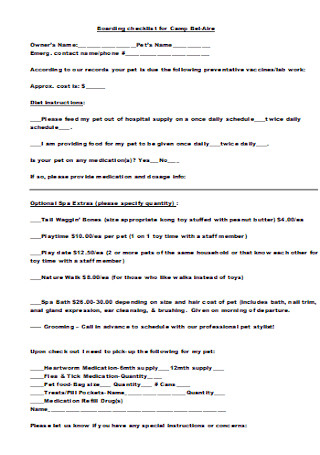
Boarding checklist for Camp Bel Aire
download now
FREE Medication Checklist s to Download
21+ Sample Medication Checklists
What Is a Medication Checklist?
What Are the Elements of a Standard Medication Checklist?
How to Create a Medication Checklist
FAQs
What are the five rights of medication?
Is a medication checklist only for emergencies?
What are the advantages of a medication checklist?
What Is a Medication Checklist?
A medication checklist is like your average medication list—a document that serves as an aid in ensuring that patients receive the correct medication to stay in good health. This reliable tool enlists every medication name, medication schedule, number of doses, a brief description of each medicine, and other instructions. However, a medication checklist is different from a basic medication list because checklists contain checkboxes used to mark progress. That means you are supposed to log each of the checklist’s checkboxes when any item enlisted there has been bought, consumed, or already done.
A research survey confirmed that about $1.27 trillion worth of medicines were spent around the globe in 2020.
Why Do You Need Medication Checklists?
A medication checklist is important for many reasons. First, this detailed checklist is reliable to avoid forgetting any detail about your medication and to ensure you manage your health correctly. In fact, any question you have about your medication can be answered as you read the checklist’s info. Also, the medication checklist can be your official tracking sheet to monitor your medication or health for audit. You will be sure that you managed your medication according to plan when you have marked all checkboxes in the list, meaning you are done.
Furthermore, medication checklists are for the benefit of every patient. Without it, you can be unsure about taking care of your health. Nursing professionals, medical practitioners, and many other experts even prepare these checklists for patients, and such patients only need to follow the instructions. More so, the checklist is a good guide when patients need to buy their doctor’s prescription at the pharmacy. Patients need not memorize the names of medicines since they will be enlisted in the document for convenience. Hence, medication checklists are tools for patient safety.
What Are the Elements of a Standard Medication Checklist?
Contents of any medication checklist may differ but there are similar elements to each example. And it is crucial you know the standard parts of a medication checklist to be prepared when you actually use one someday. Without further ado, here are the elements you should watch for in medication checklists:
How to Create a Medication Checklist
You can make a medication checklist in so many ways, especially when it can be decided according to personal preference. So even with a different design, structure, and content, a document can still work as a medication checklist as long as you got the right data being written there, which should be approved by doctors or physicians. But if you need help on how basic medication checklists are concocted, you simply need to follow these practical steps:
Step 1: Talk with a Doctor to Review All Your Medications
Before enlisting all the medications, you should have a talk with your doctor first to review your medications. You have to be sure with what to jot down in the document instead of just adding random prescriptions anyway. So if you have medications to maintain that help your condition or health, list them down in a draft. You also need to include details regarding your daily vitamins, herbal supplements, and more. Hence, your draft will be used as a reference when you will make your medication checklist later on.
Step 2: Use a Sample Medication Checklist Template
The sample templates seen above aren’t there for naught. Check out each sample medication checklist until you can choose the template you cherish the most. You will work on your template afterward so the need to make a medication checklist out of scratch is out of your workload. Also, you may freely change the template’s format, design, content, and so much more. Thus, this gives you enough leeway to personalize your very own medication checklist instead of just adjusting to what is available.
Step 3: Fill In the Medication Checklist’s Elements
From the title, patient’s name, to the notes, you have got to incorporate the necessary elements into your medication checklist. Otherwise, your list could be incomplete and it might not help you that much. In retrospect, the example earlier about a medical checklist that has all the names of medications but lacks the frequency, number of doses, and important prescriptions is a bad example. In fact, you can add as many elements as you want like a medication calendar or whatever works for you.
Step 4: It Is All in the Details
A well-written medication checklist is usually judged on how detailed and organized it is. Hence, you should write your printable document properly. That means the words written are easily understandable and that they are straight to the point rather than using too many flowery words. It is even through these details that you will learn how often a medication should be consumed, what dosage is for the appropriate age, and so much more. And if you miss a single important matter, the whole checklist may not be as reliable as you think already.
Step 5: Observe an Easy-to-Use Document
Another essential concern is that your medication checklist must be user-friendly or easy to follow. And there are many ways to do that like adding clear instructions, using an organizational chart or any visual organizer to divide the details, and ensuring that the checklist’s layout is not that hard to decipher once used. And to whoever uses the checklist, she or he might have a hard time understanding or using it so you need to consider your audience as well. Thus, ebb from anything that causes the document to be more complicated.
Step 6: Update the Checklist Regularly and Share It
Once your medication checklist is ready, produce it and refer to it regularly. But your job is still far from over though. Updating the checklist on a regular basis is your next responsibility. You need to mark your checklist per checkbox for every accomplished task or purchase anyway. And if there are new prescriptions, then you have to change your to-do list or checklist. Make it to the point that you will complete everything to accomplish in that list. And lastly, share your checklist to anyone concerned. For example, you can share your medication checklist with your family, best friend, or lover in case they can help you during emergencies with proper medication.
FAQs
What are the five rights of medication?
A helpful way to avoid errors in the medication checklist is by observing the five rights. That means you must have the right patient, the right drug or medicine, the right dose, the right route, and the right schedule or time. If all of those are present, then the medication checklist is reliable enough.
Is a medication checklist only for emergencies?
Indeed, medication checklists help patients during emergencies to receive appropriate care and medication. But it isn’t limited to emergencies alone. A medication checklist can be your daily checklist regarding what sort of medications to fulfill every day. Hence, it can be a helpful planner since you will know about every medication to take from start to finish with the checklist.
What are the advantages of a medication checklist?
Expect a lot of benefits from a medication checklist. And some of them include:
- To enhance medical safety and stay healthy in general
- To guide people from unfamiliar and new medications
- To help pharmacists during emergencies
- To assist interns and new medical practitioners
- To prevent forgetting medications and memorizing long medications
Life doesn’t always go according to plan. One day, you could win the lottery and do so much in a day for your enjoyment. But on another day, you might suddenly end up in an emergency room while struggling to breathe. Hence, medications should never be taken for granted as they help patients watch for their health. And this leads back to why medication checklists matter from preventing wrong medications down to following the correct health maintenance plan. Lessen health risks by using well-made sample medication checklists now!
